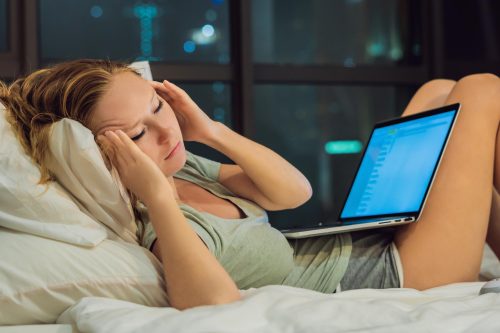Technology has revolutionized the way we live, work, and communicate. From smartphones to laptops and tablets, these devices have become an integral part of our daily routine. However, as we continue to integrate technology into our lives, there are growing concerns about its impact on our health and well-being, especially when it comes to sleep quality. In this article, we will delve deep into the intricate relationship between technology and sleep quality, exploring both the negative and positive effects that these devices can have. We will also provide you with a range of sophisticated strategies for enhancing your sleep quality, despite the constant barrage of technology in your life.
Let us first consider the negative impact of technology on sleep quality. The blue light emitted by electronic devices, such as smartphones, tablets, and laptops, is a notorious culprit. This blue light has been shown to suppress the production of melatonin, the hormone responsible for regulating sleep-wake cycles, leading to difficulty in both falling asleep and staying asleep. A survey by the National Sleep Foundation has revealed that 90% of Americans use technology devices before bed, thereby increasing the risk of poor sleep quality. Screen time, defined as the amount of time spent looking at electronic screens, can also be detrimental to sleep quality, particularly when these devices are used close to bedtime. The stimulation from social media scrolling, video gaming, or watching movies can prevent the mind from winding down for sleep. As a result, the American Academy of Pediatrics recommends that children and teenagers should not have more than two hours of screen time per day to reduce the negative effects on sleep quality. Sleep disturbances caused by notifications from smartphones, emails, and text messages can also lead to fragmented sleep, decreased sleep quality, and increased daytime sleepiness. Furthermore, the use of electronic devices in the bedroom can make it difficult to disconnect from work or social media, leading to increased stress and anxiety, which can negatively impact sleep quality.
Despite the negative impact of technology on sleep quality, there are also positive effects to consider. Sleep tracking technology can be an invaluable tool for enhancing sleep quality. Wearable devices like fitness trackers and smartwatches can track sleep patterns, providing insight into the duration and quality of sleep. By analyzing sleep data, individuals can identify patterns and make adjustments to their sleep routine to improve sleep quality. Relaxation and meditation apps can also help improve sleep quality by providing guided meditations and relaxation exercises to help individuals unwind and de-stress before bed. By reducing stress and anxiety, individuals can fall asleep more easily and improve sleep quality. Smart beds and pillows, using technology to adjust the firmness and temperature of the bed, can also improve sleep quality by reducing pain and discomfort.
To improve sleep quality despite technology, there are various strategies to consider. Establishing a technology curfew involves setting a time when all electronic devices are turned off, allowing the mind and body to wind down for sleep. This can help reduce the negative impact of blue light and screen time on sleep quality. Using night mode and blue light filters can also be effective in reducing the negative impact of blue light on sleep quality. These features are available on many electronic devices and can be used to adjust the color temperature of the screen, reducing the amount of blue light emitted. Creating a relaxing sleep environment is also essential for improving sleep quality. This involves creating a sleep-conducive environment by using comfortable bedding, a supportive mattress, and a cool and dark room temperature. Additionally, individuals should try to limit noise and external stimuli in the bedroom to create a calm and peaceful sleep environment.
In conclusion, technology has transformed our lives in many ways, but it can also have a negative impact on sleep quality. By understanding the negative and positive effects of technology on sleep quality, we can take steps to improve our sleep hygiene and reduce the negative impact of technology on our sleep. The strategies outlined in this article are just a few examples of how we can use technology to improve our sleep quality. With the right approach, we can turn technology into a positive force for improving our sleep health.
It is important to note that the impact of technology on sleep quality may vary from person to person. What works for one person may not work for another. Therefore, it is essential to experiment with different strategies and find what works best for you. This may involve making some lifestyle changes, such as reducing screen time or establishing a consistent sleep schedule. It may also involve incorporating technology into your sleep routine, such as using sleep tracking technology or relaxation apps.
In the end, the goal is to prioritize sleep quality and find a healthy balance between technology use and restful sleep. By taking steps to mitigate the negative impact of technology on sleep quality, we can enjoy the benefits of technology while ensuring that we get the restorative sleep we need to thrive in our daily lives. So, go ahead and give these strategies a try, and start enjoying the positive impact of technology on your sleep quality today!

